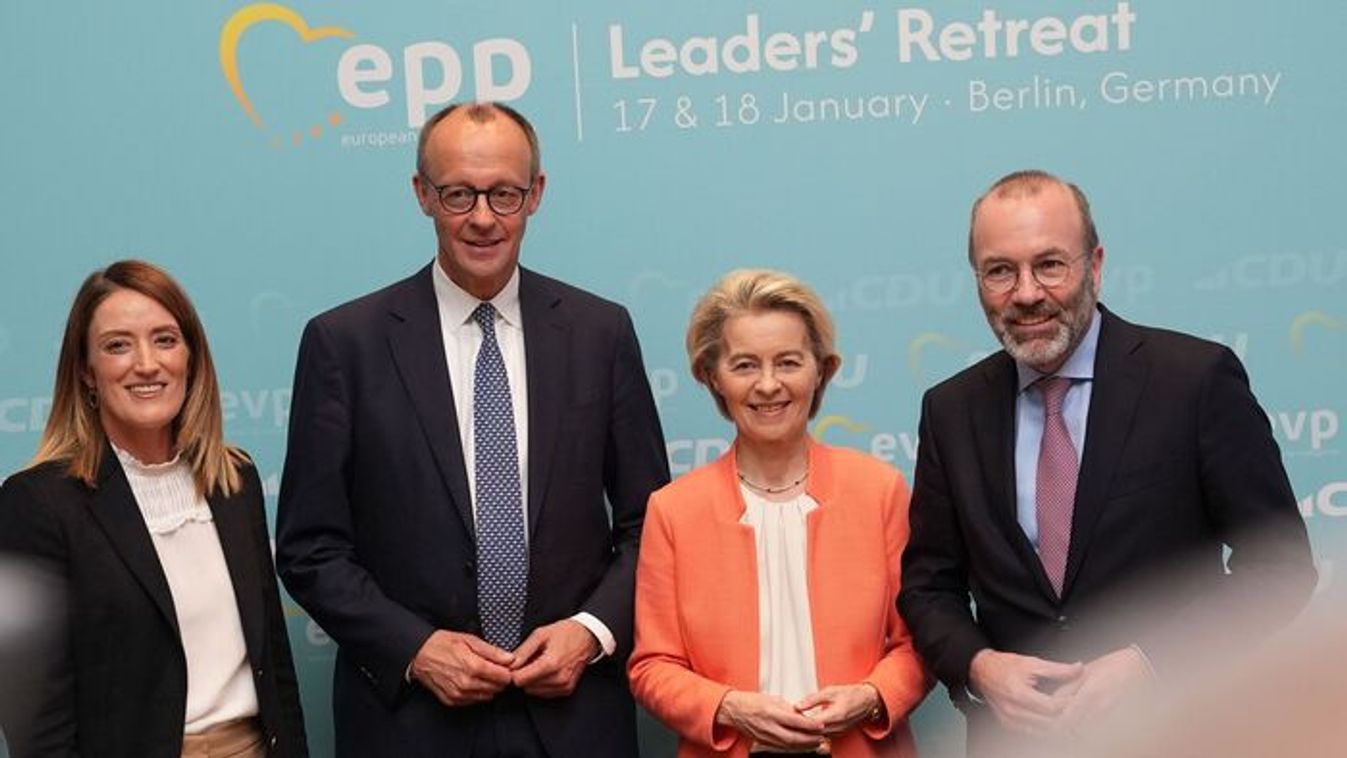Két út áll az Európai Unió előtt: az egyik a történet végét jelentené

Egyre világosabb, Orbán Viktor miért hangoztatja régóta, hogy a brüsszeli politika irányát meg kell változtatni.

Central European Fashion Days, which will run from June 7 to 9 in Budapest, offer an opportunity to the most talented designers in Central Europe to showcase their work on an international platform. But can the event really get them noticed in the mainstream fashion world? Does the region have enough creative potential to compete in this competitive industry?
Many say that there is no demand for, not even any interest in, creative products or luxury items made by Hungarian designers. Unfortunately, it's largely true. If a designer has the good fortune to build the basic foundation for a product or brand, he or she has a shot at only a very narrow segment of the market, but this wasn't always the case. How did this come about, and how can it be countered? Could a campaign similar to 'Rethink/Re-button! Hungarian is the Mode' kindle new interest in fashion and perhaps in a part of cultural history that has been largely obscured?
Following Hungary’s transition to a more democratic system of government in 1989-90, all the major state-owned factories and enterprises were privatized. By the mid-1990s the domestic clothing and textile industries and the commercial networks that had depended on them had effectively ceased to operate. They were replaced by multinational companies with which the smaller boutiques, which had flourished in the 1980s, could not compete. Not surprisingly, these smaller enterprises were gradually compelled to close their doors. At the same time, there were fewer and fewer employment opportunities as industry relocated to the Far East, with China and its cheap labor and huge export trade becoming a world center for mass manufacturing. The situation altered drastically when an up-and-coming generation emerged on the Hungarian scene and fought to maintain a foothold in the marketplace with their own independent, exclusive brands. Thanks to their determination and tenacious work, people like Márta Makány, Katti Zoób and Tamás Náray managed to develop a profile. As strong branding has become a crucially important strategy in the fashion trade, this individualism continues to play a big role in the new millennium, as shown by the success of designers like Nanushka, Dóra Mojzes, Je Suis Belle or Dóra Konsánszky.
There was no dearth of talent, but one has to be able to sell it. We will begin to see the works of Hungarian designers win prominence at the international level only when investors recognize that there is potential to make money off of Hungarian fashion. But conditions have changed, and investments cannot be recouped instantaneously. A great deal of money is needed to finance the production of a collection, and both cash and PR are tight, leaving the bulk of Hungarian designers in a precarious situation. So far, no brand has attracted long-term investment, nor has a significant market for fashion products developed in Hungary, at least not yet. But the potential is there, and so is the enthusiasm.
In February 2011, the Ministry of Public Administration and Justice, Design Terminal Nonprofit, and the Moholy-Nagy University of Art and Design (formerly the Hungarian University of Arts and Design) announced a new competition, Rethink/Re-button! Hungarian is the Mode, in which designers were asked to draw on historical and traditional motifs of Hungarian dress and re-create them in contemporary forms following contemporary fashion trends. Organized as a cultural event of Hungary’s EU Presidency in the spring of 2011, the competition drew hundreds of entries, and not only from talented young domestic designers but also several top-flight international trademark design houses, such as Artista, Anh Tuan and Je Suis Belle, names well-known to fashion enthusiasts in Hungary.
From more than 450 design works submitted, 35 were selected and shown on a walkway in the elegant setting of the Renaissance Room in Budapest's Museum of Fine Arts. The articles of clothing on display that evening showed off the fusion of traditional folk dress with contemporary fashion. The basic idea of the organizers was simple: to demonstrate that traditional and contemporary motifs and tastes are compatible. The feedback from that event not only launched several talented young designers on their paths towards success in the market, but also finally garnered some international media attention to creative ventures in Hungary. The initiative proved so popular that the 2012 competition expanded into a day-long event held in Budapest's modern Millennial Park, a venue that can seat up to 3,000 people. It included a conference and two fashion shows. Last year’s entries included two categories: a contemporary clothing design contest, in which designers could select a historical Hungarian dress motif to restyle into contemporary forms of clothing; and the design and tradition category, in which contestants had to submit individual items of clothing based on ready-made designs but made with either traditional techniques or materials.
So, where to go in 2013? The popularity of Re/button inspired its organizers to broaden its scope, and so they've turned to the whole region. The next installment, Central European Fashion Days, will feature the most talented designers from the Central European region, the so-called Visegrád Group of the Czech Republic, Poland, Slovakia and, of course Hungary, giving them opportunity to showcase their work before international buyers and managers of concept stores and showrooms. The project is run by Design Terminal, a Hungarian state institution responsible for developing the creative industries. Given the new international scope of the event, even at the competition (this time open only for Hungarian candidates) designers will be invited to draw inspiration not only from the traditions and cultural values of Hungary -- like, for example, last year's winning design, Anett Farkas's collection inspired by the architect Imre Makovecz -- but also, of course, from the cultures of Central Europe. It's all about calling attention to the great creative, design talent found throughout the region and to give them exposure to the international fashion industry.

Photo source and details of the competition: Central European Fashion Days